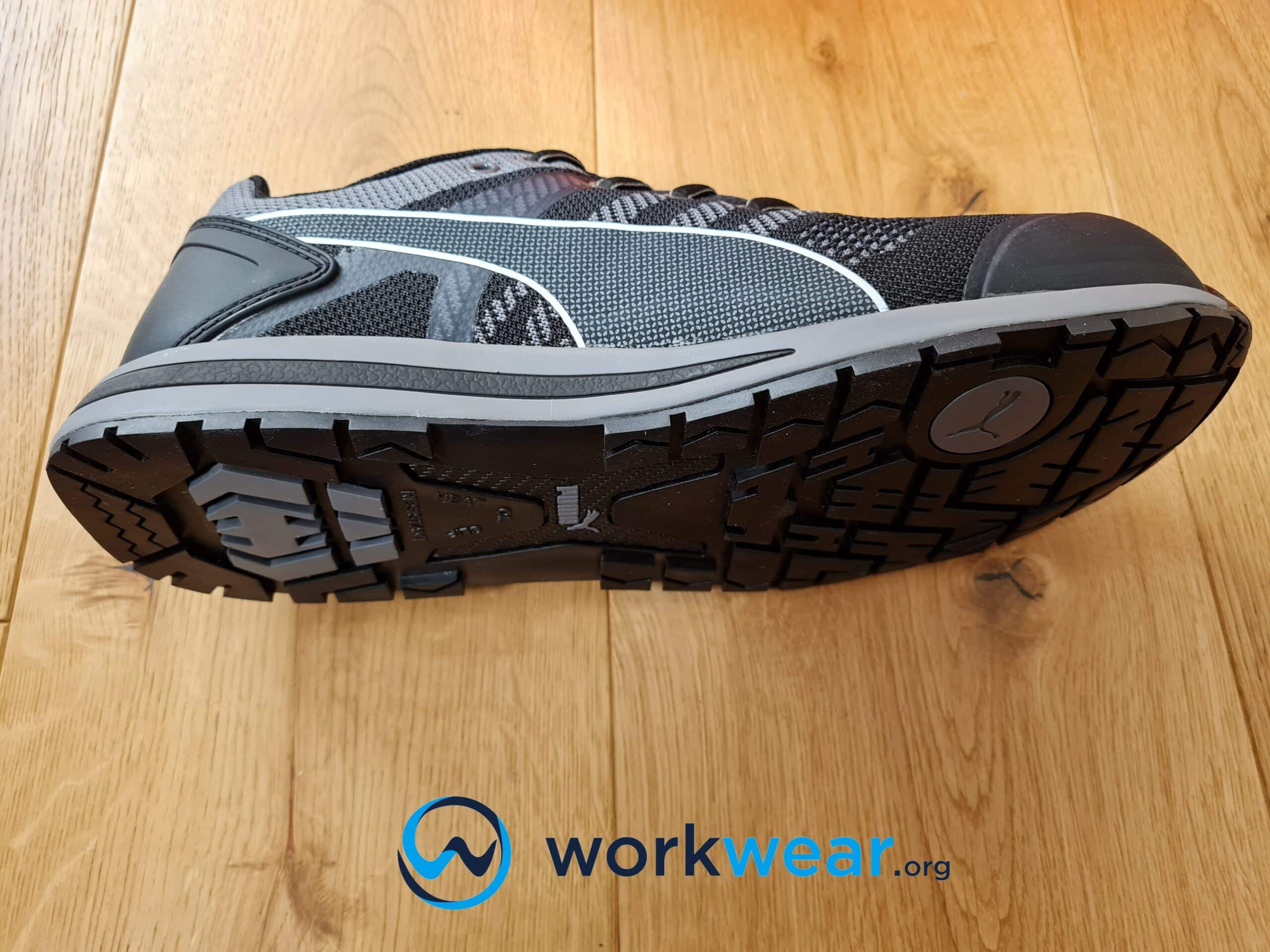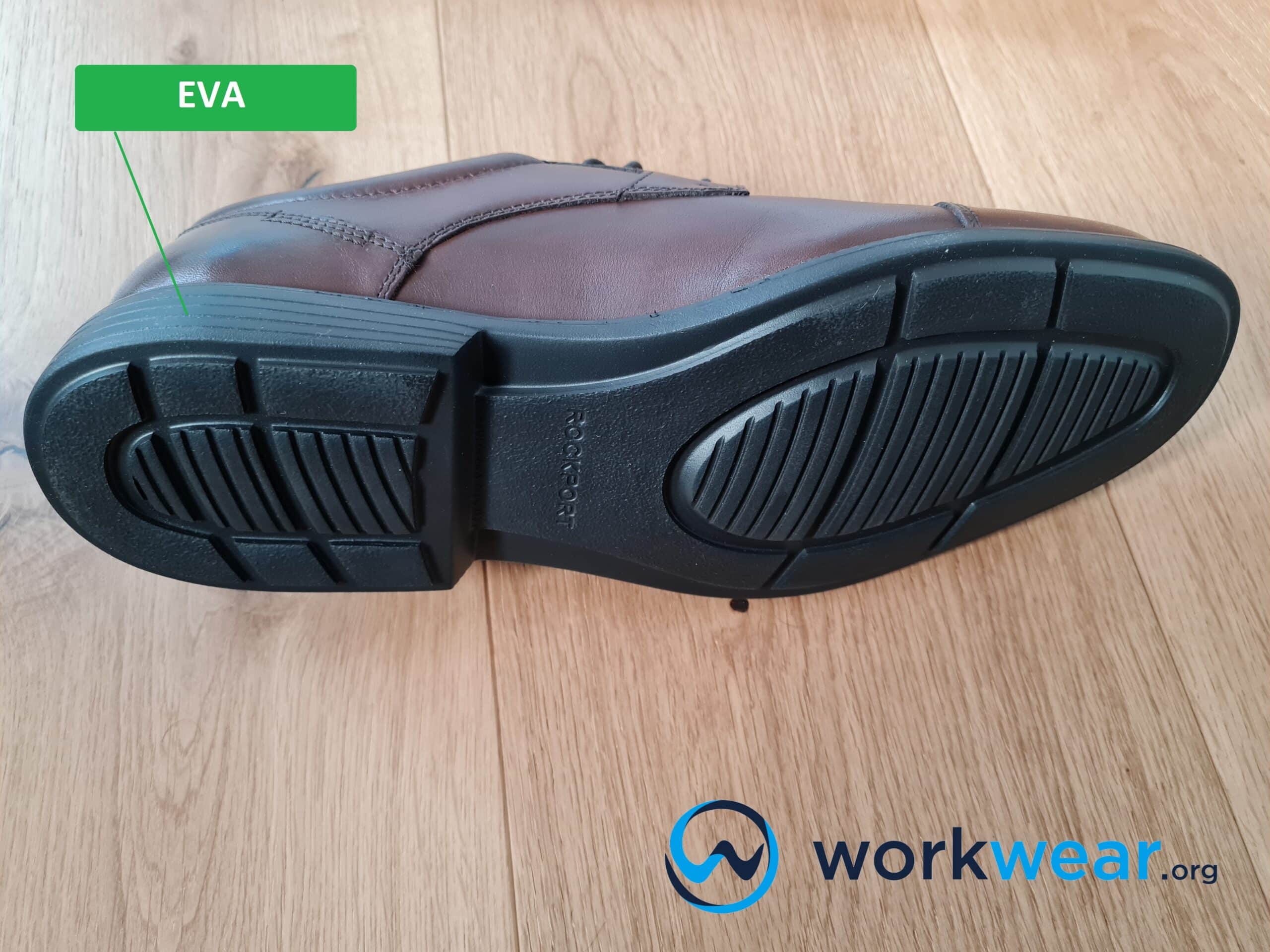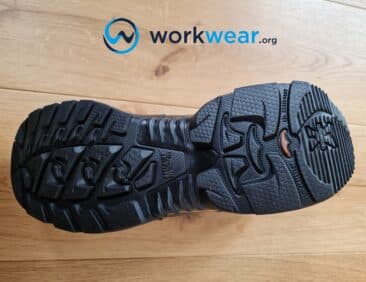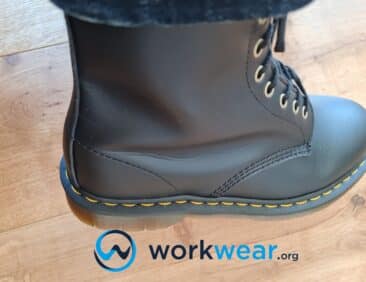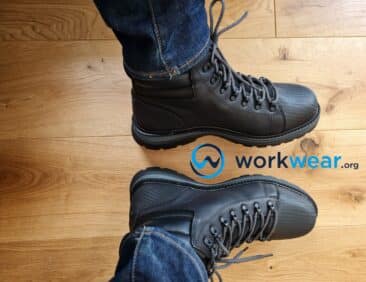EVA Soles Explained
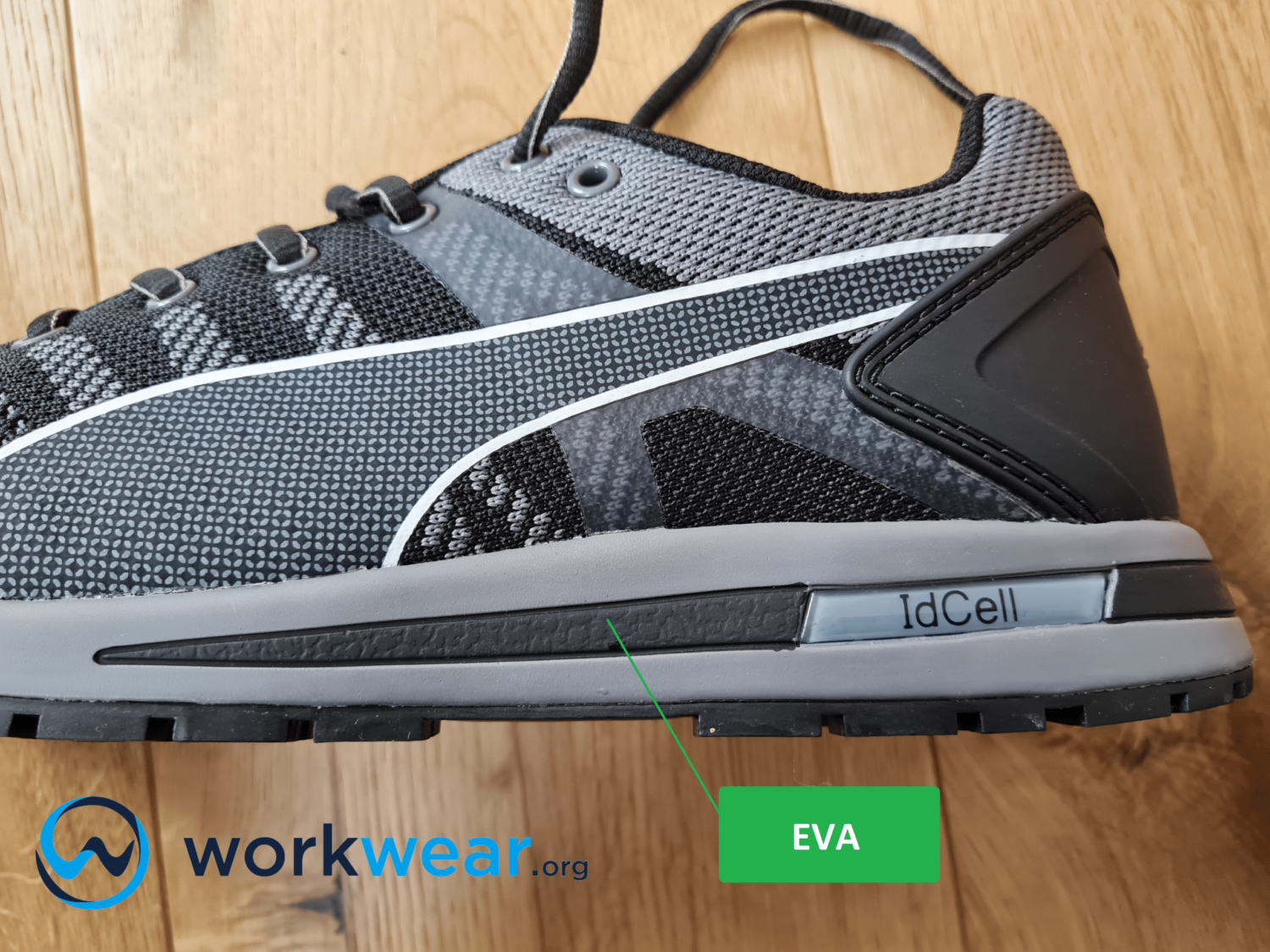
A shoe with an EVA sole has many advantages that make it an excellent option for the bottom of running shoes and sandals. EVA soles are also used as midsoles in safety work shoes because they are more lightweight and flexible than traditional rubber soles. This article explores EVA soles and what they are and used for , their pros and cons.
EVA Material: What is it?
Ethylene-vinyl acetate, more commonly known by its acronym EVA, is a type of elastomeric polymer that has a natural propensity to stretch. The materials to which it is added acquire a high sports performance and pliability reminiscent of that of rubber. You can attach these soles to any pair of shoes, whether they are for men or women, and they will transform that pair of shoes into the most lightweight and comfortable pair of sneakers possible. It is possible to modify EVA so that it has either a foam-like consistency or a more rigid one. The company that firstly made EVA is Monarch Rubber in Baltimore.
EVA Soles: How are they made?
EVA shoes are made of EVA in their foam-like condition, which gives them a springy feel. The EVA in the soles is molded during production to the specifications set by the manufacturer. These soles are then applied to the footwear of your choice. The result is lightweight, flexible EVA shoes that fit perfectly.
The Benefits of Using EVA Soles
There are countless incredible advantages to sporting sneakers with EVA soles, some of which are listed below for your convenience.
Pliability
It stands to reason that footwear constructed out of EVA, which is a material that is both softer and more flexible, will be more comfortable to wear than footwear constructed out of rubber.
Compact and lightweight
Since EVA is less dense than rubber, it and the merino wool uppers help keep the shoe’s overall weight low.
Embraceable warmth
Heat is not easily lost through the soles of an EVA shoe, so your feet will remain toasty for longer. Because of this, EVA is the perfect material for the sole of a woolen boot.
Adaptation to shocks
EVA soles are more effective in dampening the force of each footfall. This improves the durability and comfort of your EVA shoes. One of those advantages is reducing your footsteps’ impact on your joints.
Reliability
EVA soles have the potential to outlast other sole materials. This will ensure that your EVA shoes last a long time.
EVA Soles: A Variety of EVA Footwear
The manufacturer places a high priority on the convenience that the shoes provide for your feet and believes that the addition of EVA soles is an excellent way to improve upon the already impressive level of comfort that the shoes offer. Because of this, they have incorporated them into the designs of some of the most well-liked shoe styles. EVA soles are what make EVA shoes so desirable. The uppers are ultra-cushy, and the outsoles are made from shock-absorbing EVA foam, providing unparalleled comfort throughout the entire day. Among the many types of EVA footwear are:
Wood Sneakers
The eucalyptus fibers used in the construction of the wood sneaker give the shoe a plush feel while also allowing air to circulate freely. Additionally, the cloth is eco-friendly and biodegradable. These lightweight EVA sneakers are designed to keep your feet fresh and comfy, thanks to the cushioned anti-blister heel and moisture-wicking fibers. The sole is made of natural organic rubber and light EVA foam, making the shoe stable and supportive.
Merino Runner
These shoes are ultra-light and very comfortable, thanks to the Merino wool top and lining. Unique 3D-Knit technology ensures the runner conforms perfectly to the shape of your foot. This EVA shoe has a ball of temperature-regulating merino wool inside, making it more breathable.
Wool Sneakers
The wool shoe is a comfortable, lightweight alternative among the many-colored EVA sneaker choices. EVA shoes with a merino footbed are the closest thing to barefoot walking you can get with a sole. In addition to being a moisture-wicking and antibacterial fiber, merino wool also keeps your feet feeling fresh all day long.
Merino Wool Knit
The top, the inner, and the footbed of this sneaker are all constructed from merino wool, making it the ideal shoe for wearing barefoot. These EVA shoes have a high-tech Diamond-System sole that makes them non-slip and a durable EVA outsole.
Safety Toe
Safety toe shoes provide that extra protection to those who work in harsh external conditions. Safety toes come in different varieties, with the most popular choices being aluminium, steel and reinforced rubber. These men’s safety toe work shoes offer flexible EVA midsoles, a concrete structure and lightweight construction.
EVA Soles vs. Normal Soles
When jogging on rough ground, normal shoes’ rubber bottoms might be uncomfortable, but EVA soles provide additional cushioning. Normal soles are also much bulkier than EVA soles, making them bad for walking long distances. Furthermore, they are less durable than EVA soles, requiring more frequent replacement.
Compared to EVA running shoes, normal shoes are hotter and less ventilated, making it unpleasant to sit for extended periods. Users who drive or take public transportation to work should wear EVA shoes, while those who work outside should wear their tried-and-true regular shoes.
| Characteristics |
EVA Soles |
Normal Soles |
|---|---|---|
| Shock Absorbing |
|
|
| Cushioning |
|
|
| Weight |
|
|
| Keeps the foot warm |
|
|
| Insulation |
|
|
The pros and cons of using EVA soles
The following are some of the pros and cons of EVA soles:
Pros
- Pliability and warmth
- Hard to damage
- Lightweight
- Top-of-the-line shock absorber
- Soft and relaxed cushioning on the feet
- It offers superior insulation and a non-slip surface
Cons
- Easy to stain
- EVA soles tend to wear down over time
The pros and cons of using normal soles
The following are some of the pros and cons of normal soles:
Pros
- Slip-resistant
- Wear-resistant rubber
Cons
- Heavier than EVA soles
- Poses a serious environmental threat due to its inability to degrade ecologically
- Easy to pierce
- Not ideal for oily environments
Conclusion
Even though ethyl vinyl acetate, more commonly referred to as EVA, is widely regarded as one of the materials used in athletic shoes and safety shoes alike, due to the padding and supple feel it offers, this material does not include a PU sole. Instead, it is only incorporated into the midsole of the shoe. So, while EVA shoes are the right choice for runners, athletes but also workers, who are looking for shoes with a lightweight and flexible sole.
FAQs
- Is EVA good for shoe soles?
- EVA is not a good material for other types of footwear because it is weak against abrasions, has a long pressure life, and adheres to dirt easily. PVC soles can’t be beaten because of how well they insulate, how long they last, and how well they resist water.
- Which sole is better, EVA or PU?
- “Polyurethane,” of course. Runners tend to choose lighter, more flexible materials like EVA. Therefore, the material’s greater weight and higher density are drawbacks. However, PU is more durable than EVA. The air bubbles that give EVA midsoles their initial lightness and bounce gradually deflate over time.
- Is EVA cushioning good?
- EVA has unusual physical properties. It’s not so soft that it collapses under pressure, but it can take a beating without deforming. Because of its superior shock absorption compared to rubber and its superior form retention compared to a cork, EVA is sometimes referred to as a “goldilocks” substance.
- Is an EVA sole good for the rainy season?
- EVA soles are resistant to the filth brought on by the rainy season, including mud, slush, and other elements. In addition to that, there are EVA foam outsoles that are water-resistant.
- Is EVA plastic or rubber?
- Even when subjected to extremely high temperatures, this plastic maintains its strength. It does not crack or break easily under stress. Despite its flexibility and suppleness, this plastic is very durable. The copolymer known as stretchable EVA is created by combining ethylene and vinyl acetate, the two components that make up the copolymer.
- How long does EVA foam last?
- Depending on conditions, EVA foam has a service life of more than ten years.
- Is EVA material waterproof?
- In terms of softness and flexibility, the products made from EVA are comparable to those made from rubber in their characteristics. The material is resistant to the effects of ultraviolet light, possesses high levels of clarity and gloss, remains stable even when exposed to low temperatures, prevents the formation of stress cracks, seals out moisture when combined with hot-melt glue, and can withstand high levels of heat.
- Are EVA soles good on ice?
- Although EVA footwear usually have thick, flexible and protective soles, we would recommend the use of shoes and boots which are specifically designed for snow and ice.
678+
Products Reviewed
24+ Years
Combined Experience
500+ Hrs
Field Testing
